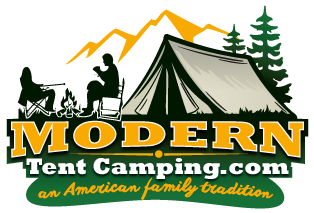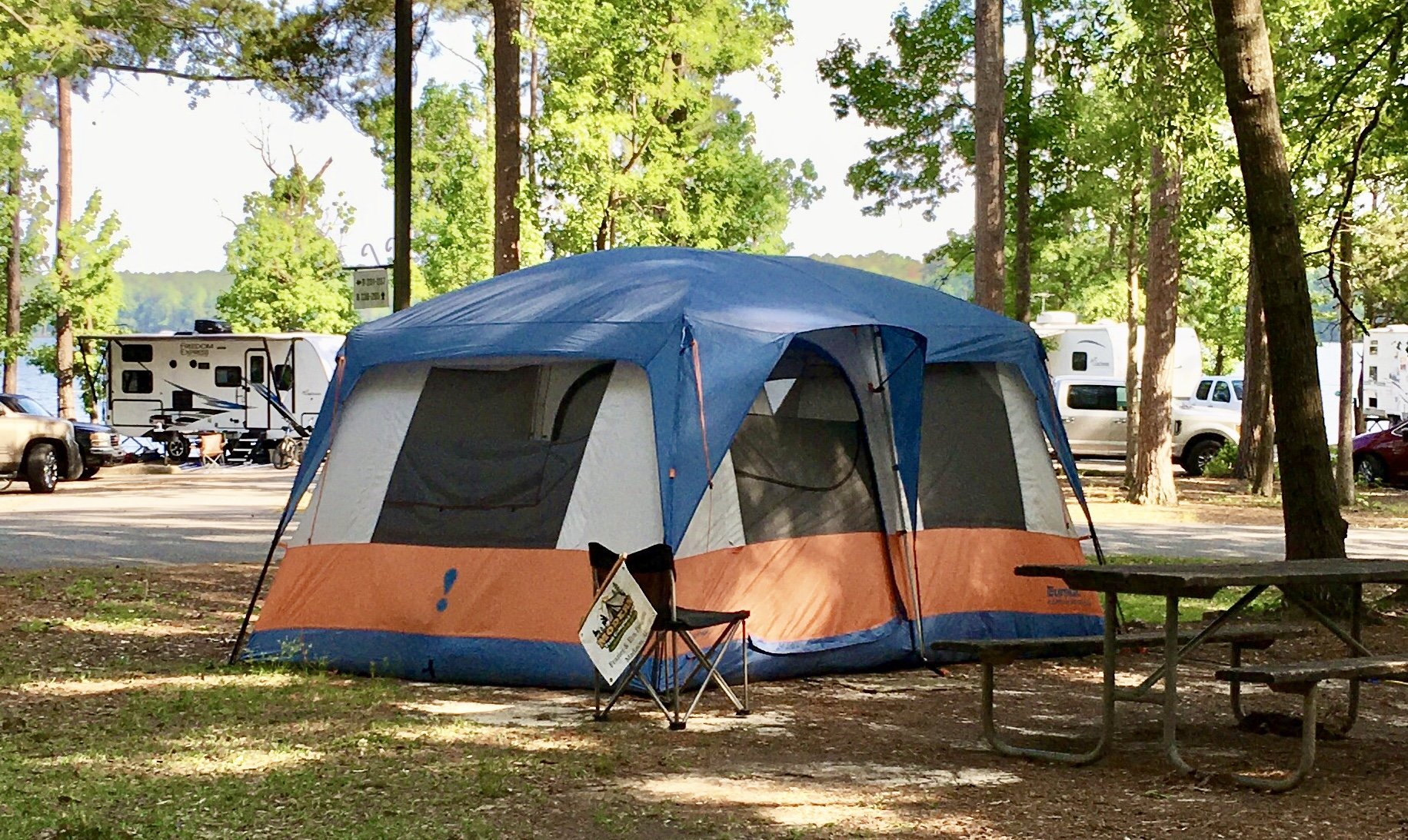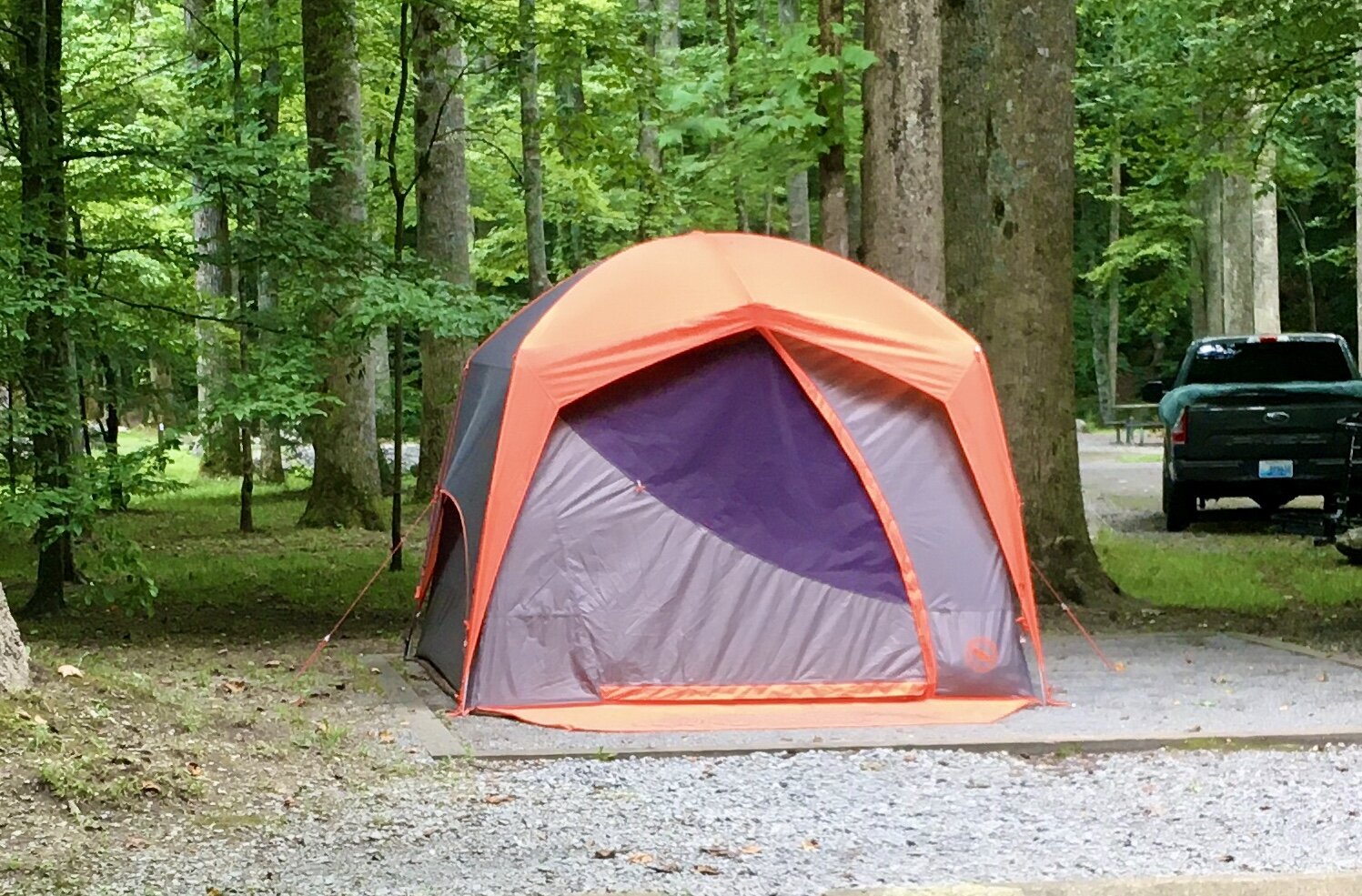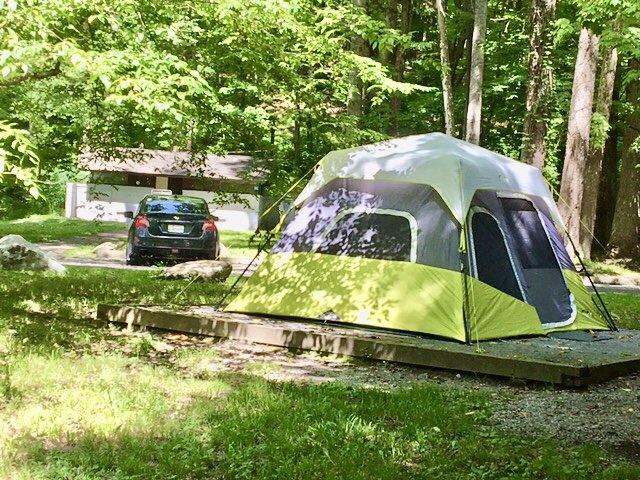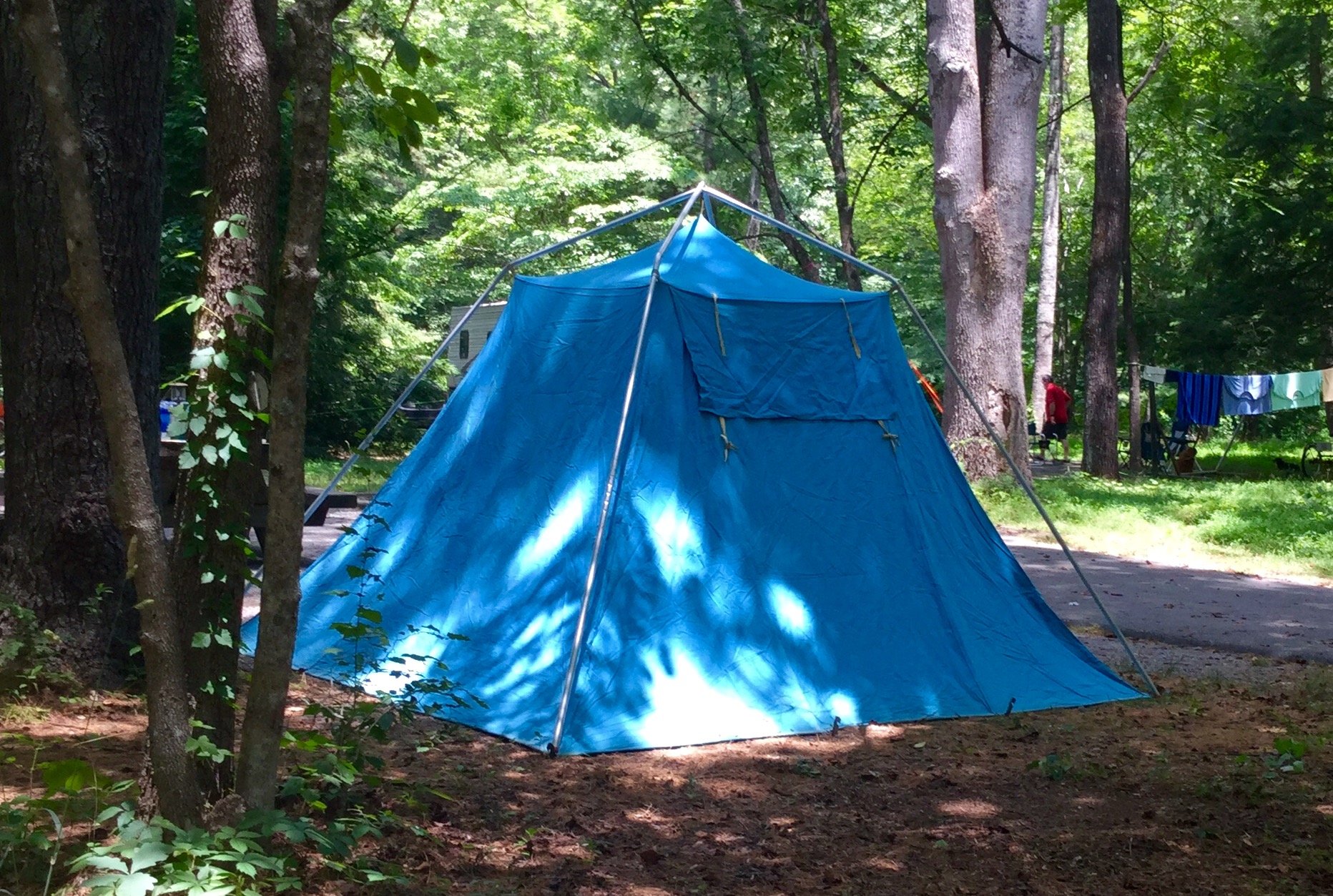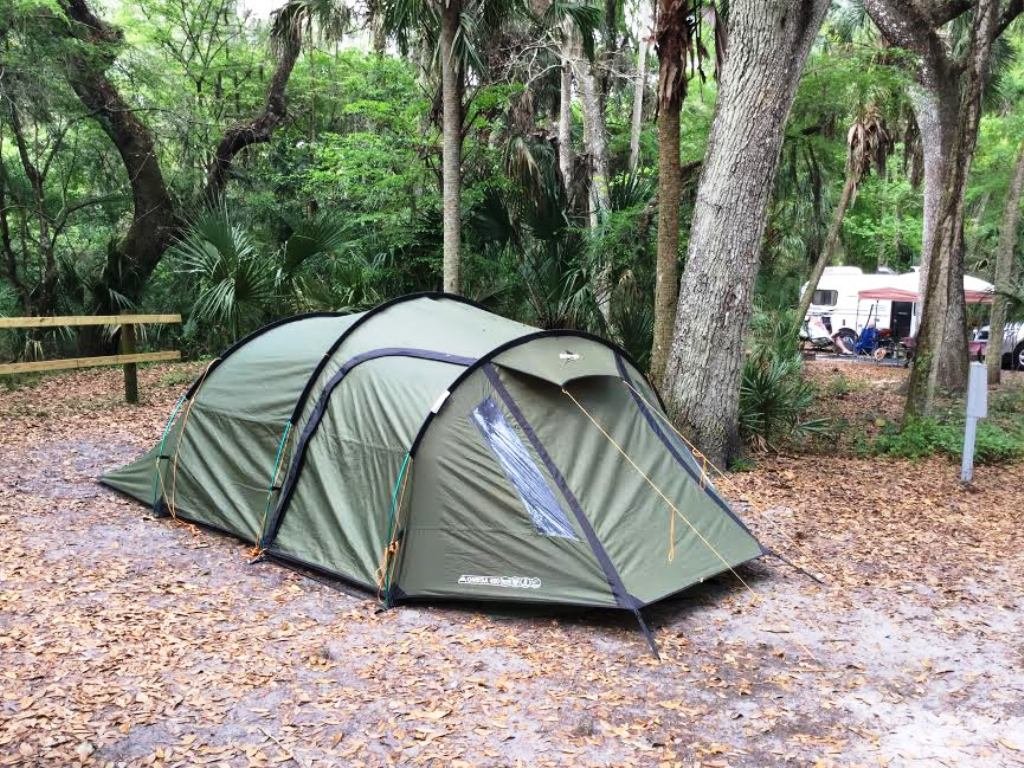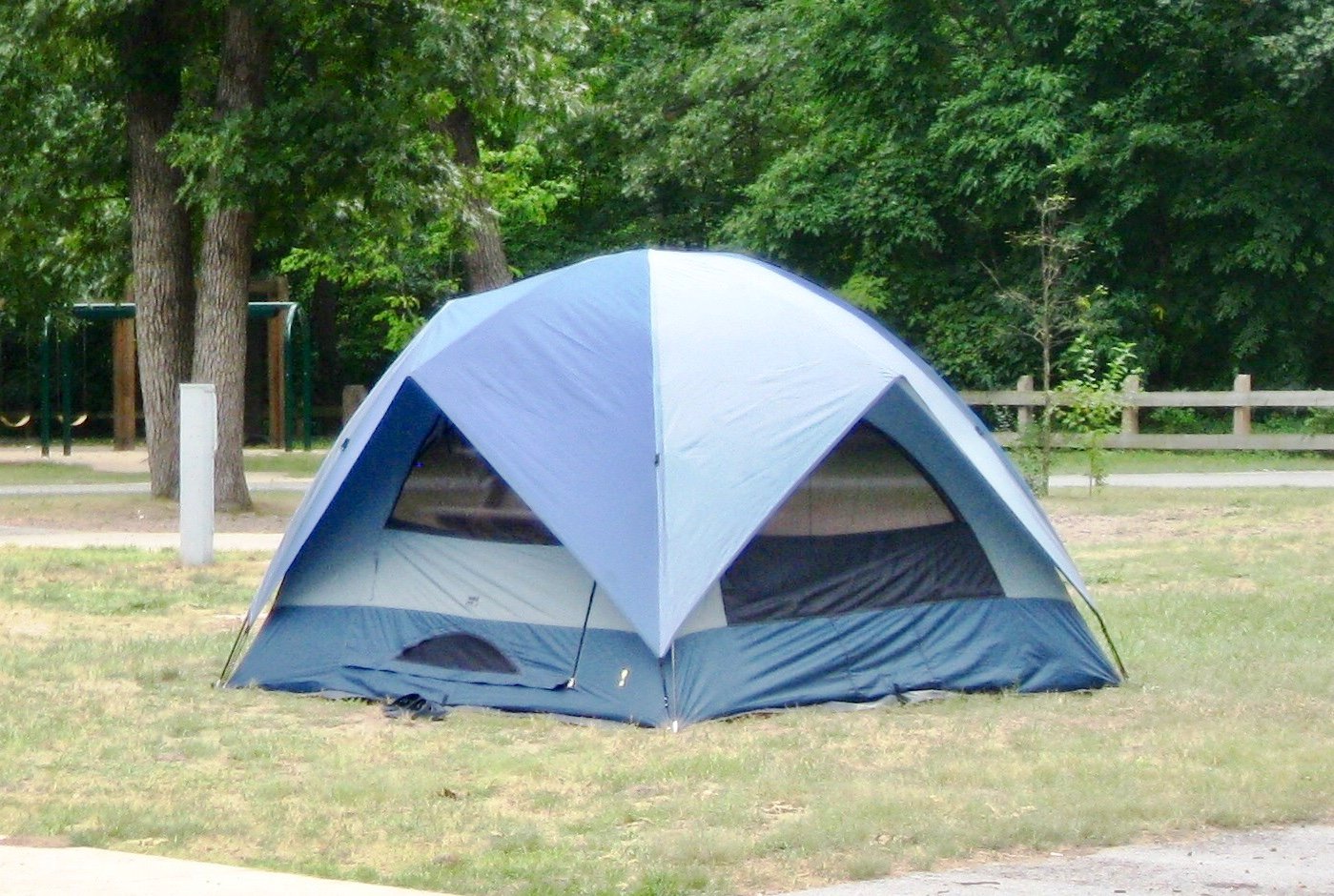Buy a Good 6-Person Family Camping Tent
The first piece of equipment to buy for family camping trips is a good tent to protect you from rain, wind, dirt, mosquitoes, spiders, bugs, and cool temperatures. The tent should be weather proof and large enough to accommodate two adults and a small child or two - but not too large that it will not fit on standard tent pads and in all campsites. For most families, this should be a 6-person tent - with a floor measuring about 9 feet by 10 feet (or 90 square feet).
Tips for Buying a Good Family Camping Tent
BUY A QUALITY NAME. For example Marmot, REI, Big Agnes, Kodiak, Eureka, Kelty, or The North Face. These tents usually are waterproof and wind resistant. If you have a problem, these makers will usually repair or replaced damaged tents for little or no cost.
BUY A TENT WITH ABOUT 90 SQUARE FEET OF FLOOR. These tents will usually be called 6 person tents. smaller tents may not have enough room for a family with a child or two and larger tents will not fit on many tent pads or in small campsites.
SELECT THE FABRIC THAT BEST FITS YOUR CAMPING STYLE. Canvas tents are well-suited for long base camp and cool or windy weather trips and are frequently chosen for winter camping - but they are heavy, require considerable packing space, and require considerable drying time after every trip. Polyester tents are much lighter and are best suited for short hot weather trips - but they do not breathe as well as canvas. Nylon was once a popular tent material but most higher quality makers have stopped using it because it stretches and sags when wet. But some budget-friendly models still use it.
SELECT ALUMINUM POLES WHEN POSSIBLE. Aluminum poles are strong and light-weight but usually add $100 to the tent price. Steel poles are very strong but heavy. Fiberglass poles are more economical and reasonably strong but thin poles can break or chip - especially in cold weather. They are much more likely to chip or break after a dozen or so setups. Avoid them if possible.
LEARN IMPORTANT DIFFERENCES BETWEEN TENT DESIGNS. They play an important role in determining which tent is best for your family. See details below.
AVOID TENTS WITH LARGE GARAGES OR VESTIBULES. Large garages and vestibules are not necessary for family camping — and may make it difficult to fit in small campsites. Larger tents with more interior space is more practical.
SHOP FOR THE BEST PRICE. Tent prices can fluxuate as much as $100 within a year. Generally they are higher in the spring and lower in the fall. Furthermore, their value drops rapidly after purchase. So, a briefly used tent can be much lower than a new one. Look for gently used tents or discounted prices during fall and winter.
Best Family Camping Tents - 2024
Eureka Copper Canyon LX6 - BEST ALL-AROUND FAMILY CAMPING TENT
100 sq ft, 22 pounds, $330. Economically priced, stable umbrella tent design, vertical side walls, very spacious, front door awning. Great for hot or cool weather, great customer service, and warranty. Also available 4P, 8P & 12P. Older models were excellent and can be found for much less. Limitations: heavier than dome and tunnel tents, and requires more packing space.
Marmot Limestone 6 - BEST HOT WEATHER TENT
83 sq ft, 16 pounds, $370. Modified dome, packs into a small space, lightweight, near-vertical walls. It is great for hot and windy weather. Also available 8P. Limitations: very drafty in cool weather, small floor area.
REI Co Op Wonderland
83 sq ft, 23 pounds, $600. This is the fourth generation of the very popular Kingdom tunnel tent. New pole design adds front to rear stability. Strengths are great doors, more spacious than dome tents. Limitations are expensive, difficult to setup & requires more guylines.
REI Co Op Base Camp - Best tent for stormy weather
84 sq ft, 21 pounds, $550. Third generation, modified dome tent with more vertical side walls. Packs in a small space, good wind protection. Without its waterproof rainfly, this tent would be good for hot weather and with its rainfly deployed would stand firm in moderately strong winds. Limitations: low ceiling height and steep sidewalls reduce inside space and make it hard to stand and walk around.
REI Co-op skyward
83 sq ft, 16 pounds, $450. Modified dome tent with near vertical side walls, and high ceiling. Very lightweight and requires little packing space. Small packing space, easy set up, and good hot weather tent. Limitations are small rainfly, water leaks in blowing rain, cold in cool weather, and small floor area.
Big Agnes Bunk House
83 sq ft, 20 pounds, $450. Fourth generation, modified dome tent with near-vertical walls. It is light weight and packs into a small space. Limitations: relatively small floor for a 6 person tent.
Big Agnes Big House
83 sq ft, 16 pounds, $400. Third generation, modified dome tent with near-vertical walls. It is extremely light weight and packs into a small space. A vestibule is available for an added cost. Limitations: small floor space for a 6P tent.
Big Agnes Dog House 6
83 sq ft, 13 pounds, $380. Ultra light, single wall tent with fabric (rather than mesh) walls. It a better choice for cool weather camping. Limitations: may be difficult to cool on hot summer nights.
The North Face Wawona 6
86 sq ft, 20 pounds, $450. Modified dome tent with more vertical walls, lightweight, packs into a small space, good wind protection. Limitation: drafty in cool weather and integrated garage may require more ground space than available in small campsites.
NEMO Aurora Highrise 6
83 sq ft, 19 pounds, $500. Modified dome tent with more vertical walls, lightweight, packs into a small space, good wind stability.
Cabella’s Alaskan Guide
110 sq ft, 33 pounds, $400. Four season dome tent designed for cold weather. Also available 4P & 8P. Strong materials. Limitations: fiberglass poles, rainfly may tear after several uses.
Gazelle T8 - BEST E-Z UP TENT
110 sq ft, 58 pounds, $580. Hubbed sidewall tent with vertical walls. Very easy for one person to set up and spacious. Good for cool weather because holds heat well. Limitations: heavy, requires extra packing space, and may collapse in moderate winds.
Kodiak Canvas Flex Bow - BEST COLD WEATHER TENT
100 sq ft, 85 pounds, $600. Modified canvas cabin tent with near vertical walls. Available in several sizes and window options. Great for cold weather and - with windows - also good for hot weather. Stands strong against moderate winds. Limitations: expensive, very heavy, requires extra packing space, and requires extra long drying time after every trip.
Kelty Rumpus
86 sq ft, 17 pounds, $300. Dome tent with a large covered front porch. Also available 4P. Limitations: fiberglas poles.
The Eureka Copper Canyon LX 6 & 8 are modified umbrella tents.
The Big Agnes Big House is a modified dome tent.
The Marmot Limestone 6 is also a modified dome tent.
The Kodiak Flex Bow 6 canvas tent is a modified cabin tent.
The CORE Equipment 6 is a modified instant umbrella tent.
The Gazelle T8 has a new instant hubbed-sidewall tent design.
Best Budget-Priced Tents
These budget-priced tents should provide adequate protection from bugs and the elements for several trips in good weather but may not hold up as well to stormy weather or accidental stressors.
CORE Equipment Instant Tent 6
99 sq ft, 23 pounds, $170. Umbrella tent with slightly slopped sidewalls.
Alps M’teerng Camp Creek
100 sq ft, 24 pounds, $270. Umbrella tent with vertical side walls.
Alps M’teerng Merimack
100 sq ft, 16 pounds, $180. Traditional dome with steep sloped side walls.
Coleman Sun Dome
100 sq ft, 11 pounds, $180. Ultra light weight traditional dome tent with steep sloped side walls.
Ozark Trail Dark Rest Cabin
90 sq ft, 16 pounds, $180. Umbrella tent with vertical side walls.
Basic Tent Designs
Modern family camping tents have several different structural designs and these designs create important differences in terms of the tent’s cost, weight, packed size, storm resistance, heat retention, and drying speed. When shopping for a tent, you should understand these important differences and how they relate to your family needs. For example, if you drive a small car, you probably will want a tent with a small packed size. If you frequently camp near the ocean or some other windy place, you will probably want a tent that provides good storm protection.
This Eureka Timberline wedge tent served as the official Boy Scouts tent for over 25 years.
This old Army surplus wall tent was my first store bought tent. It was warm in cool windy weather but didn’t have a floor, windows, or mosquito netting.
This traditional Cabin tent is a wall tent with windows, mosquito netting, and a sewn-in floor.
This traditional Umbrella tent is supported by 4 rigid corner poles that bend near the top and converge at a center peak.
This Hilleberg tunnel tent packs into a very small space and provides considerable storm protection — but it is expensive.
Modern umbrella tents provide a lot of inside space and comfort.
The Eureka traditional dome tent is economically priced and provides considerable storm protection.
This modern bell tent has one rigid center support pole that holds the peak high. Sidewalls are pulled out and staked down away from the center.
WEDGE. Very old design. Used as confederate soldiers tent in civil war but no longer popular. Supported by long, rigid center ridge pole (usually made from wood, steel, or heavy aluminum) that is held upright by two rigid support poles - one at each end. Side walls had to be staked to the ground to stand upright. The Eureka Timberline, that was adopted as the official Boy Scout tent for over 25 years is best example. Strengths are inexpensive and packs into a small space. Limitation is very limited inside space and non-self-standing.
WALL. Old design. Like wedge tent, supported by long, rigid center ridge pole held upright by two rigid upright poles - with 4 to 8 side poles to pull roofline out away from center and create vertical side walls. Used by outfitters to make hunting and fishing camps. Also used by families that want to have a summer-long base camp. Strengths: they have lots of interior space and can accommodate cots and simple furniture well; they can also accommodate wood-burning stoves for cool weather camping. Limitations: they typically do not have sewn-in floors, windows, or mosquito netting. Also, they are heavy, non-self-standing, require more packing space, and require long drying time.
CABIN. First defined about 1910 as a wall tent with higher walls, screened windows, and a sewn-in floor. Unfortunately, this definition of a “cabin tent” was confused in 2010 when the Coleman Company introduced an instant umbrella-style tent and called it an “Instant Cabin.” Within a few years, other tent makers, including Ozark Trail, introduced similar instant umbrella tents and called them cabin tents. Despite these recent developments, I believe that for the sake of clarity, we should continue to define a cabin tent as a modified wall tent and distinguish traditional cabin tents from umbrella-style tents. Best current example is Kodiak Canvas Flex Bow. Strengths: strong against the wind and retains heat. Weaknesses similar to those listed for wall tents.
BELL. Very old design that was frequently used by Union Army during Civil War to shelter enlisted troops. Supported by large, long, rigid, upright, center pole usually made from a small tree. Recent variations include Sibley, ridge, and pyramid tents. Became less popular about 1920s but several tent makers are now offering updated models. Strengths are economical price, lightweight and packs small. Limitations are non-self-standing, limited interior space, and center pole can interfere with interior layout.
UMBRELLA. Introduced around 1920 as modified bell tent and has become the most popular design today. Initially supported by single rigid center pole with four folding arms near the top that push the ceiling up and out away from the center pole. Modified a few years later to replace single center pole with four rigid corner poles that bend inward near the top and converge at a center peak. Modified by Coleman in 2010 to create the first instant tents - later renamed instant cabins. Also modified by several makers to replace rigid roof poles with flexible fiberglass or aluminum poles. Primary strengths are self-standing, lots of interior space, and very stable in stormy weather. Limitations are they are heavier than dome or tunnel tents and require more packing space. Our Eureka Copper Canyon is a good example.
TRADITIONAL DOME. Introduced around 1972 and gained widespread popularity with backpackers. Enlarged around 1990 for family camping. Supported by two thin flexible aluminum or fiberglass poles that cross diagonally across the top of the tent from one corner to its opposite. May have one or two more poles to support the rainfly. Strengths are inexpensive, self-standing, very lightweight, small packing space, easy setup, & strong against moderately strong storms. Primary limitations are low ceiling and sloped sidewalls limit interior space.
MODIFIED DOME. About 2010, tent makers added additional poles to dome tents to give them more interior space. These modified dome tents are higher than traditional dome tents and have more vertical sidewalls. A good example of a modified dome tent is the Marmot Limestone. The primary limitation is its extra cost.
TUNNEL. First introduced around 1985 and quickly became popular among European camping families - but did not receive much attention in the U.S. until REI introduced its Kingdom tent around 2010. Supported by 2 to 4 lightweight flexible aluminum or fiberglass poles that bend over the top of the tent from one side to the other to make a tunnel with a floor and two enclosed ends. Strengths are lots of interior space, lightweight, and require little packing space. Primary limitation is they require lots of guylines - both sides and both ends - that create tripping hazards.
INSTANT. First introduced in 2010 by the Coleman Company and continues to grow in popularity as designs and workmanship improve. Are popular because they are very easy to set up by one person - and now are offered by Ozark Trail and several other tent makers. Initially, they were umbrella tents but Coleman called them “Instant Cabin Tents” and the definition of a “cabin tent” was thus changed to mean any tent with near vertical walls, windows, and a floor. Limitations are they are heavy and require considerable packing space. Furthermore, many early models (and a few current models) leaked, ripped, had fragile poles that easily broke, and had poor zippers that easily snagged - so families should read web reviews before buying one. About 2015, the Gazelle Company offered a new (and more expensive) hubbed-wall, quick-set-up tent - and it seems to be a better quality tent - but users should handle the tent with care to avoid pulling the fabric wall away from its hub. If you frequently camp alone (or set up a tent by yourself), you may want to consider an instant tent.
